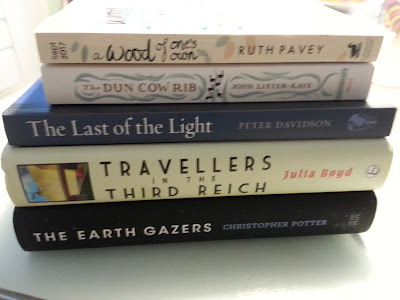 The Reassembler by James May
The Reassembler by James MayMy rating: 3 of 5 stars
Modern gadgets and machines are designed to have almost no user serviceable parts, even a washing machine these days will need a technician to plug in a laptop to verify the fault before he is able to repair it. Gone are the days where most things could be repaired, though James May argues that this was because products were expensive, not particularly well made, often went wrong and so needed repairing and routine maintenance. He prefers modern gadgets that don’t need repairing or fiddling with to function. For May, reassembling items is a form of therapy; the act of creation calms and stimulates at the same time. That, and he has a thing about having the correct tools and screwdrivers in particular.
This is a nice tie into the series with lots of colour pictures from the workshop that he used on TV as he takes a pile of nicely laid out parts and makes a lawnmower and a guitar and an old Bakelite telephone. It is full of his rambling philosophy and dry sardonic wit, with short essays explaining how a specific item works, though sadly there is not as much text as I’d like. I completely get why he needs to assemble things, it is a theme that seems to be gaining traction elsewhere that using our hands to make and create is good for the soul. As an engineer (electronics and mechanical) I would have liked more detail on the items he was reassembling, but this an ideal book for the general reader.
View all my reviews
















